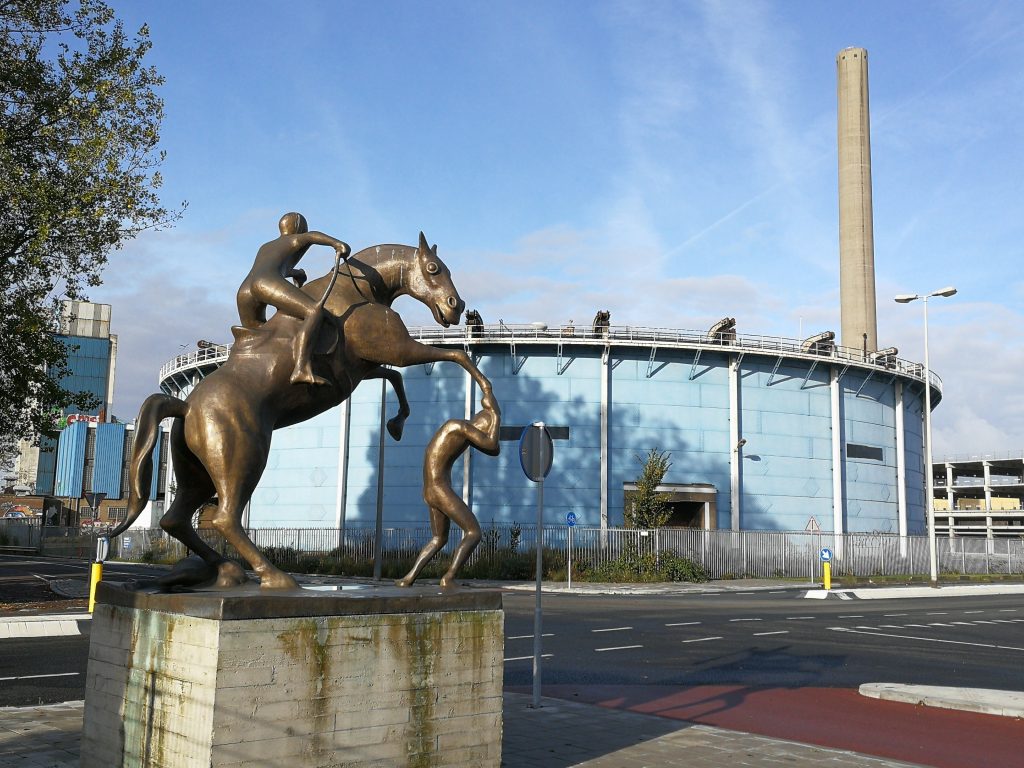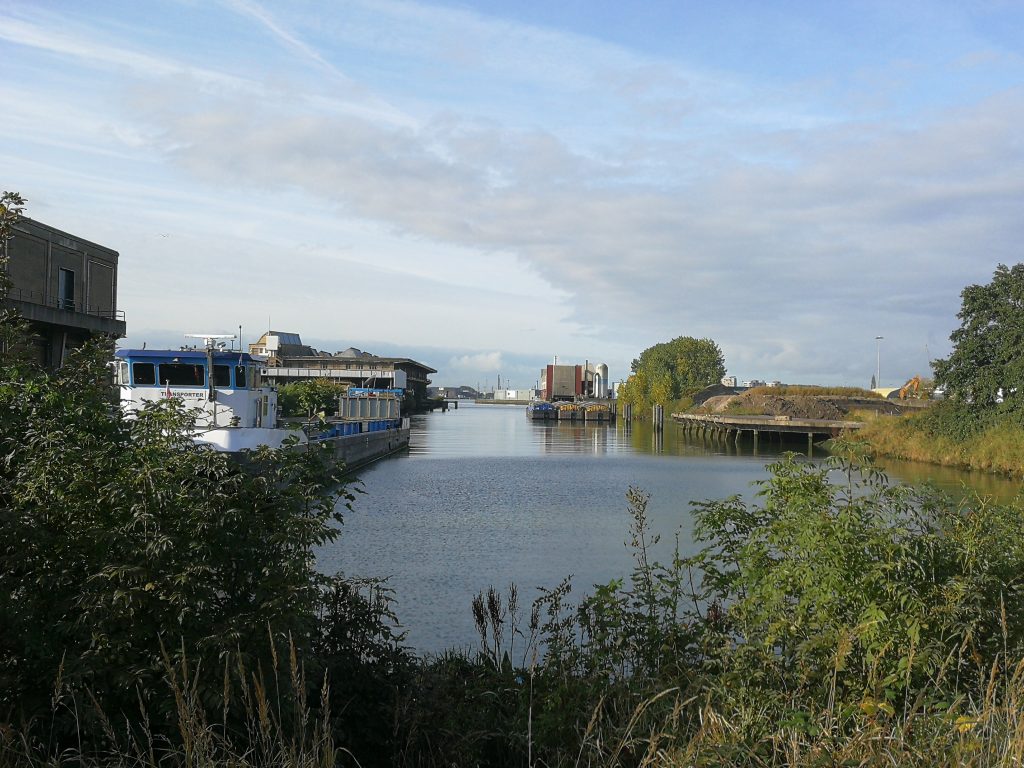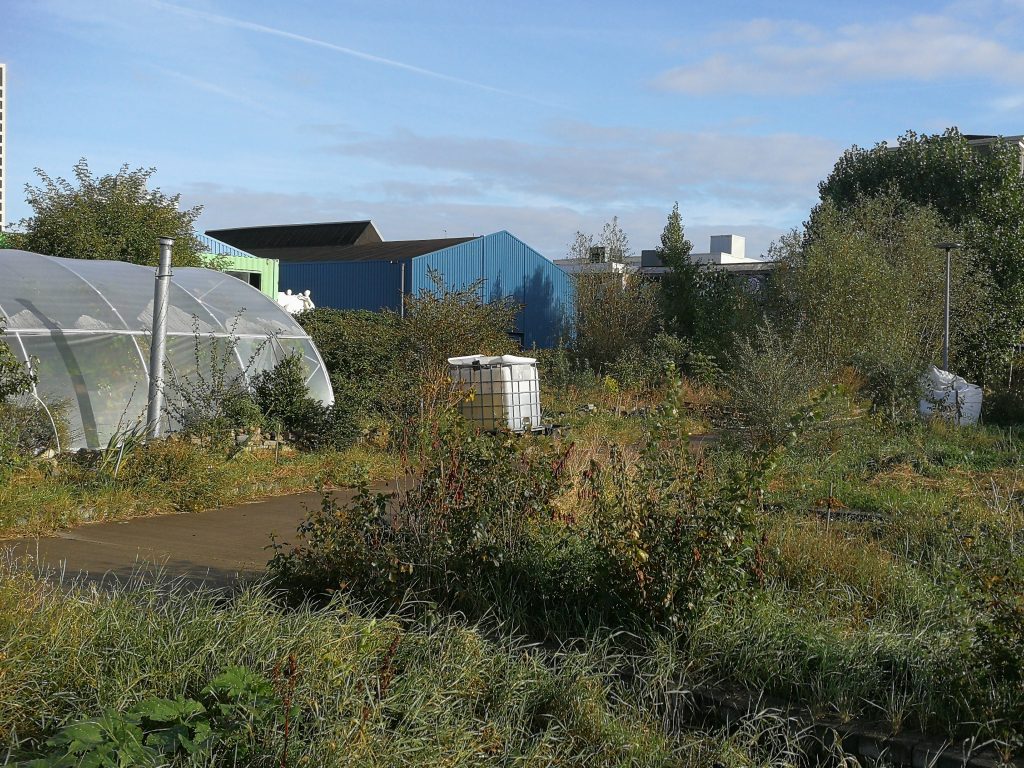The Rotterdam Makers District extends to the west and south of Rotterdam city center, divided by the wide waters of the river Meuse. The district received its current appellation in a vision and strategy document published in 2017 [1]. The document sets out how the city’s roadmap to the next economy will be anchored to and implemented in this particular territory. This vision – which embodies the joint ambitions of the Municipality of Rotterdam and the Rotterdam Port Authority – combines innovative manufacturing industry, circularity principles, and urban living and working environments, while maintaining a connection to port. Indeed, in the Makers District, the City and Port Authority claim to be exploring innovative connections and synergies between each other, specifically in areas that have experienced a retreat of port activities in recent decades. As the vision document states, these areas are seen as spaces of opportunity: “on the boundary between city and port, outdated port areas offer the perfect conditions for an innovation experiment” [2]. Before we delve into what this innovation experiment entails, let’s take a step back and explore the district’s rich history.
Before the Makers District
The Makers District’s two constituting neighborhoods have strong historical ties to the city’s port and industry. To the south of the Maas, the area called Rotterdamsche Droogdok Maatschappij Rotterdam (RDM) owes its name to a consortium that settled here in 1902 with the aim of addressing the city’s seafaring fleets’ repair and maintenance needs. The consortium soon branched out to cargo and passenger shipbuilding, and later submarines [3]. The RDM consortium was nationalized in 1983, and its downsized activities were recentered towards serving the Dutch Marines and the development of innovative maritime technology. To this day, the shipyard’s legacy is visible in the area’s morphology, its imposing warehouses and hangars, as well as in the nearby residential area, Tuindorp Heijplaat, which was developed in the early twentieth century to house RDM’s workers.
Perched on the opposite side of the river, lodged between Rotterdam’s city center and the city of Schiedam, Merwe-Vierhavens (M4H) completes the Makers District. The M4H area – size-wise on a par with the city center – was formerly the city’s “energy and transshipment port” [4]. The Citrusveiling and the Ferro Dome buildings are iconic references of the area’s legacy as a fruit trade and gas handling and storage center.


Ambitions of the Makers District
The ambitions of the Makers District are set out in the vision and strategy document from 2017 and the spatial framework for M4H established in 2019. In developing the area, several key features are clearly valued, including: flexibility, mixed use, innovation, and creativity. Moreover, five objectives guide the area’s socio-economic transition.
The first relates to attracting and enabling innovative entrepreneurship, especially in the field of making and manufacturing. This objective is supported by a technological transition, facilitating small scale, tailored and highly specialized production – making use of additive manufacturing, robotization and material science [5]. The Makers District should host collaborative and shared facilities and spaces for experimentation. The second objective focuses on offering a diverse range of employment opportunities for the wider region’s population. Thirdly, there is the goal of stimulating an open innovation environment, with crossovers and synergies between educational, business and knowledge institutions. Fourthly, the urban residential fabric should be extended to the area’s waterfront, particularly at the Merwe piers. Finally, the Makers District is designated as a testing ground for the implementation of the circular economy in Rotterdam’s city and port. Moreover, in the spatial framework for M4H, the City and Port Authority commit to eight sustainable development area principles to be upheld in contracts, tenders and construction projects in the area. Among these principles, we find the production and use of renewables, sustainable mobility, the valuing of waste flows and a resilient climate adaptive system [6].

City in the making, making in the city
As its designation suggests, one of the cornerstones of the vision and strategy of the Makers District is a transition to urban innovative manufacturing. The development of the district fits within a wider policy movement advocating for new forms of urban manufacturing. Grodach and Gibson [7] for instance have noted how in the United States and Australia policies supporting the advancement of urban manufacturing grapple with a few related issues. In their analysis of public policy documents and plans relating to urban manufacturing, the authors noted that there are competing (higher value) land uses that can price out manufacturing or hinder it. An example of this would be when industrial operations come into conflict with other uses, such as residential or commercial. Another issue is the inaccurate – sometimes uncool or outdated – image which contemporary manufacturing often must contend with [see also 8]. Moreover, there is a discrepancy between the available and accessible pool of labor on the one hand and the skills needed to underpin the advancement of urban manufacturing on the other, often signaling a mismatch between existing and necessary workforce policies and training.
Sydney’s experience with policies for the promotion of urban (small-scale) manufacturing was analyzed by Kylie Budge [8]. In her findings, she points to the need for ongoing community and stakeholder consultation, as well as an integrative approach to making. Since urban making practices intersect with many socio-economic domains, Budge noted how making “is connected to all these areas of city life, and to isolate them to a previous way of thinking about ‘the arts’ or ‘culture’ or ‘manufacturing’ does not do justice to this iteration of the maker movement and its generative and expansive capacity in cities” [9]. Such international experiences hold valuable lessons for Rotterdam’s Makers District and its counterparts elsewhere, highlighting the importance of monitoring the development of mixed land use that integrates urban manufacturing, as well as accounting for place-specific pressures that the advancement of urban manufacturing may face [10].
Head Image | Street art on the Keilewerf 2 building, Rotterdam M4H. (© Amanda Brandellero, 2021).
Notes
[1] https://www.rotterdammakersdistrict.com/images/RDM_makersdictrict_brochure.pdf/.
[2] Rotterdam Makers District (2017), Visie en Strategie. Rotterdam Makers District, p.4.
[3] https://www.rdmrotterdam.nl/geschiedenis/.
[4] Rotterdam Makers District (2019), Spatial Framework Merwe-Vierhavens Rotterdam. Future in the Making. Summary. Rotterdam Makers District, p.3. The area development plan for M4H can be consulted on https://m4hrotterdam.nl/ruimtelijk-raamwerk-m4h/.
[5] Rotterdam Makers District (2017), Visie en Strategie. Rotterdam Makers District, p.10.
[6] Rotterdam Makers District (2019), Spatial Framework Merwe-Vierhavens Rotterdam. Future in the Making. Summary. Rotterdam Makers District, p.18.
[7] Grodach, C. & Gibson, C. (2019), “Advancing manufacturing? Blinkered Visions in the U.S. and Australian Urban Policy”, in Urban Policy and Research, vol. 37, no.3, pp. 279-293.
[8] Budge, K. (2018), “Making in the city: disjunctures between public discourse and urban policy”, in Australian Geographer, vol. 50, no. 2, pp. 185-199.
[9] Budge, K. (2018), “Making in the city: disjunctures between public discourse and urban policy”, in Australian Geographer, vol. 50, no. 2, pp. 185-199, p.197.
[10] For an in-depth discussion, see Grodach, C. & Gibson, C. (2019), “Advancing manufacturing? Blinkered Visions in the U.S. and Australian Urban Policy”, in Urban Policy and Research, vol. 37, no.3, pp. 279-293.
References
Budge, K. (2018), “Making in the city: disjunctures between public discourse and urban policy”, in Australian Geographer, vol. 50, no. 2, pp. 185-199.
Grodach, C. & Gibson, C. (2019), “Advancing manufacturing? Blinkered Visions in the U.S. and Australian Urban Policy”, in Urban Policy and Research, vol. 37, no.3, pp. 279-293.
M4H in cijfers. Programme-Monitor 2020, Samenvatting. Thema: Bedrijvigheid & Werkgelegenheid nader beschouwd, March 2021.
RDM Rotterdam (2019), Bedrijvenmonitor 2019. Samenvatting. Rotterdam Makers District.
Rotterdam Makers District (2017), Visie en Strategie. Rotterdam Makers District.
Rotterdam Makers District (2019), Spatial Framework Merwe-Vierhavens Rotterdam. Future in the Making. Summary. Rotterdam Makers District.